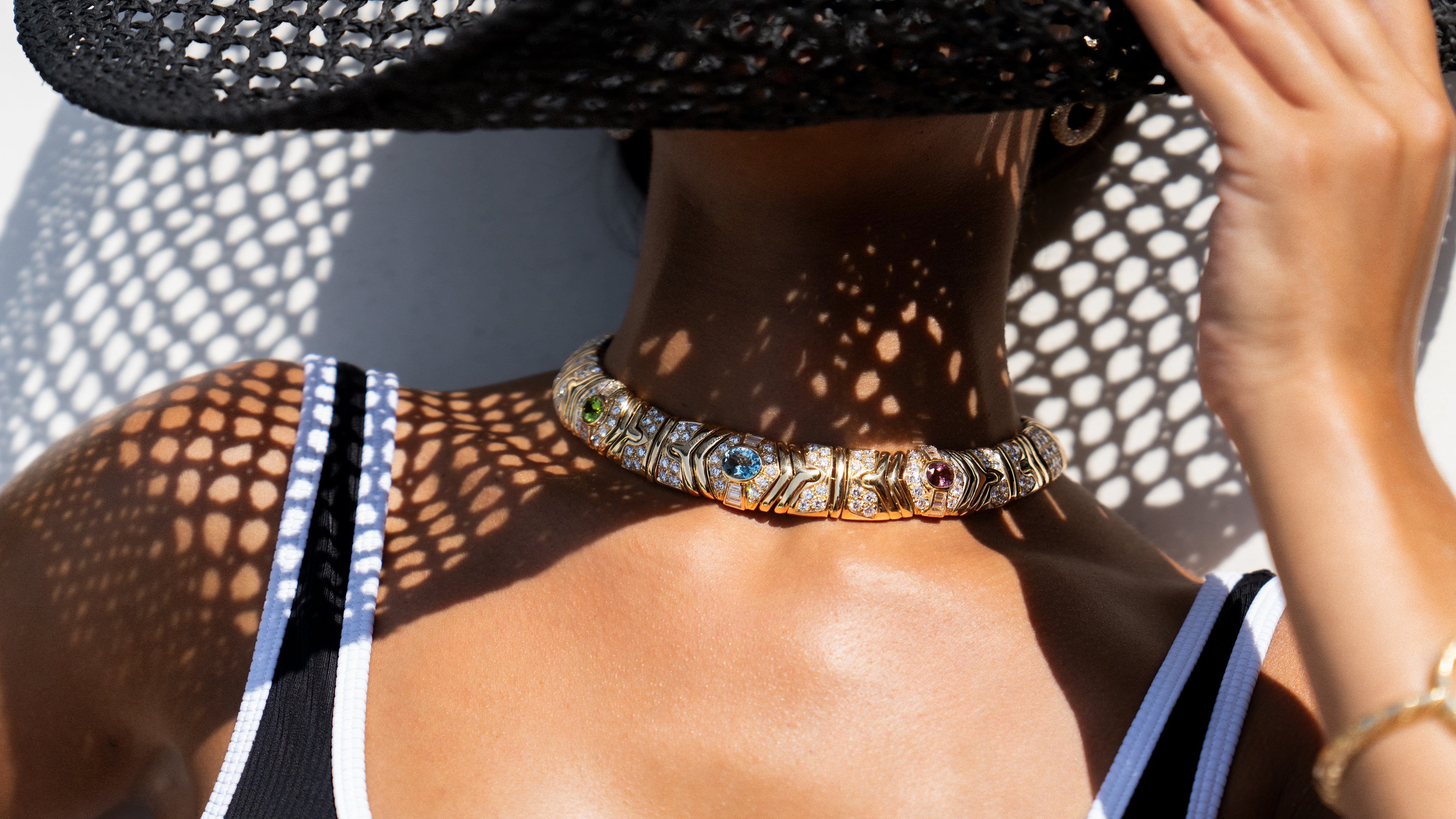Gustav Manz
A master goldsmith whose work was showcased by the most prestigious jewelers of his time, Gustav Manz created an impressive breadth of jewels in the decades preceding and following the turn of the 20th Century.
German Beginnings
Gustav Manz was born in 1865 near Pforzheim, the primary jewelry-manufacturing city in Germany. The location of his childhood home proved to be fortuitous. He became a jeweler’s apprentice in his second year of high school, a practice that was common and was part of the high school’s curriculum.
As a young man, Manz freelanced as a journeyman jeweler in Rome, Cairo, South Africa, London – and Paris. It was there he was drawn to the Exposition Universelle, where he discovered the work of such noted artisans as René Lalique and Paulding Farnham. And likely where his exposure to Art Nouveau style sparked his creative style.

Coming to America
In 1892, Manz immigrated to America and settled in New York with his wife, whose family had also been involved in the jewelry business in his hometown. The couple moved across the Hudson River to Leonia, New Jersey, an artists’ community. Initially, Manz partnered with other jewelers as well as prominent women designers before starting his own manufacturing company.
In 1904, Manz entered 25 pieces of jewelry in the Louisiana Purchase Exposition (more commonly known as the St. Louis World’s Fair). The jewels were part of a suite displayed by F. Walter Lawrence. The entry forms listed Lawrence as the designer and Manz as the maker of the pieces. However, Manz’s influence is clearly identifiable in the reeds and dragonflies that were hallmarks of Manz’s work.
This partnership between designer and manufacturer makes it difficult to definitively identify Manz’s designs. Fortunately, his journals survive, detailing the thousands of pieces he produced. Many are typical of the decorative arts of the Belle Epoch era, with a profusion of floral, animal, patriotic, and classical themes.

Manz Style
One area where Manz clearly stood out was his whimsical animal creations. A.M. Veghte of F. Walter Lawrence hailed Manz as “the finest carver of animal jewelry during his years in the jewelry business.”
Any number of creatures, both wild and domestic, became the subjects for his jewelry, including elephants, panthers, bulls, bears, snakes, dogs, peacocks, and eagles. These wearable sculptures were rendered in realistic fashion and intricately detailed. Many found their way atop stickpins, finely chased or awash in pavé-set diamonds. The pins were offered in sets of six to his clients, which included Black, Starr & Frost, as well as Raymond C. Yard. His critters also found their way into a variety of objets d’art, including sculptures, silverware, and bookends. To achieve the realistic rendering of his subjects, Manz studied live animals. It is said he once brought home a baby wildcat from the zoo to study and sketch. Panthers were perhaps the most depicted of his menagerie, with stick pins being the most popular. However, his “Fighting Panther” rings were also sold to many jewelers, among them Baily, Banks, and Biddle.
As well as animal forms, Manz was a master of creating jewelry that incorporated realistic plant life. Floral motifs used included branches, leaves, lily pads, cattail reeds, lotuses, and grapevines. Additional details were added to create the texture of bark, leaf, petal, or stem to enhance the look.
In keeping with the demand for archeological themes that were all the rage at the turn of the Century, Manz’s jewelry included symbols of ancient art and artifacts. Asian and Persian motifs were abundant, but it was the Egyptian-themed pieces that were the most plentiful. These were mainly sold to Tiffany & Co. and featured a variety of unique designs that incorporated sphinxes, Eyes of Horus, hieroglyphics, winged scarabs, pharaohs, pyramids, ankhs, snakes and lotuses. In 1924, his work was featured in an exhibition at the Metropolitan Museum of Art.
Classical Greek and Roman motifs also found their way into Manz’s jewelry. Columns, scrolls, acanthus leaves, and swags were among the embellishments he used on pieces that depicted mermaids and bacchanalian scenes.
The advent of World War I brought forth a clamoring for patriotic pieces, and Manz complied by producing jewelry that featured flags and eagles, many decorated in red, white, and blue gemstones.
His reputation as a master goldsmith brought Manz several commissions for sacred plates, among them a solid gold ostensorium for New York’s Church of St. Francis of Assisi and another that was presented to the Shrine of Our Lady of Lourdes in France.

Clientele
Manz produced jewelry for many of the era’s most notable American firms. They included Tiffany & Co., Cartier, Black, Starr & Frost, Gorham, Marcus & Co., Dreicer & Co., Raymond Yard, Udall & Ballou, J.E. Caldwell, Greenleaf & Crosby and Shreve, Crump & Low.
The Final Years
The Great Depression, along with a diagnosis of cancer, took its toll on Manz. Clearly, Manz could have gotten a job with one of the other manufacturers in the business, but the transition for him would have been difficult. Although his health stabilized, his losses continued to rise. In 1944, following an attempted suicide, he was placed in a nursing facility where he spent the last two years of his life.
His daughter, Doris Eastman, made it her mission to archive Gustav Manz’s journals and other documentation to preserve his memory. Thanks to her efforts, it is possible to understand the many contributions made by this genuinely talented goldsmith. Much of his work has been acquired by museums, including the Metropolitan Museum of Art, the Cleveland Museum of Art, and the Newark Museum.
Browse our Gustav Manz Collection

